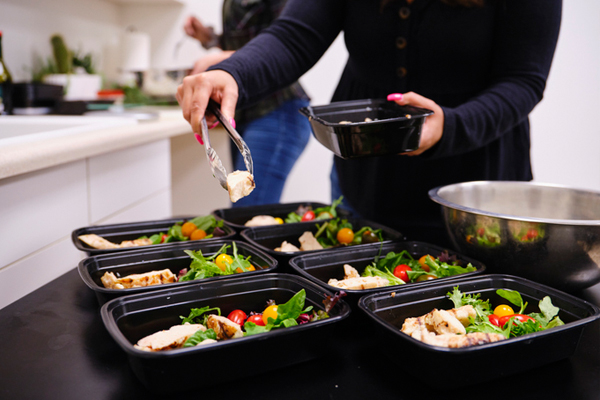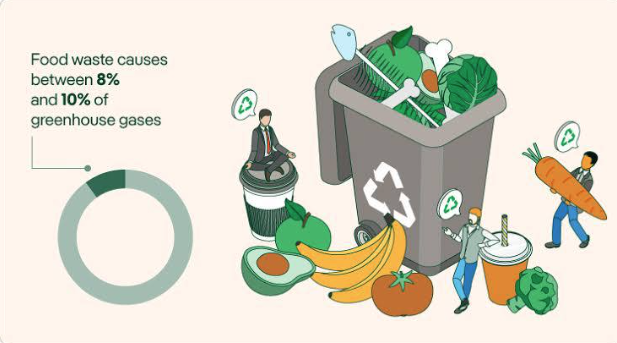Combat climate change one meal at a time—by planning ahead, wasting less, and eating with the planet in mind.
Every day, people around the world throw away perfectly edible food—half-eaten meals, forgotten leftovers, produce gone bad. In fact, it’s estimated that one-third of all food produced globally goes to waste. In landfills, that wasted food breaks down and releases methane, a greenhouse gas 25 times more potent than carbon dioxide.
It’s not just an environmental concern; it’s a moral and economic one. While millions face food insecurity, households waste billions of dollars in groceries each year. What if a simple habit—like meal planning—could change that?
The good news? It can.
Meal planning is a low-effort, high-impact strategy that empowers individuals and families to reduce food waste, save money, and shrink their carbon footprints. And when combined with sustainable eating principles—like those found in the Planetarian Diet—the impact multiplies.

The Environmental Toll of Food Waste
Before diving into how meal planning helps, let’s look at why food waste is such a big deal:
- Greenhouse gas emissions: Food loss and waste contribute to 8% of global anthropogenic (human-caused) emissions. If food waste were a country, it would be the third-largest emitter after China and the U.S.
- Resource waste: Every item of food wasted represents wasted resources—water, land, labor, fuel, and energy. For example, producing one pound of beef requires over 1,800 gallons of water.
- Deforestation and biodiversity loss: More land is cleared for agriculture to meet growing demand—even though a significant portion of that food is never eaten.
Reducing food waste is one of the top solutions to climate change, according to Project Drawdown. And it’s something you can tackle right from your kitchen.

Meal Planning: A Practical Solution
Meal planning is the practice of deciding in advance what meals you’ll prepare and eat over a set period (usually a week). At its core, it’s about intentional eating—buying and cooking what you actually need and want.
Here’s how meal planning directly helps reduce food waste:
1. You Buy What You Need—And Use It
Impulse purchases are a major contributor to waste. Meal planning ensures you’re only buying ingredients that serve a purpose. This limits spoilage and saves money.
2. Leftovers Get a Second Life
Planning ahead means you know when and how to use up leftovers. Yesterday’s roasted veggies can become today’s wrap filling or tomorrow’s soup base.
3. Fewer Forgotten Ingredients
How many times have you thrown away herbs, dairy, or produce because you didn’t get around to using them? When meals are planned, ingredients get used—on purpose.
4. Less Last-Minute Takeout
Meal planning reduces the temptation to order in when you have no idea what to cook. Less takeout means less packaging waste and more control over what goes into your meals.
The Planetarian Diet: Eating for a Better Future
Meal planning becomes even more impactful when guided by planet-friendly principles—which is where the Planetarian Diet comes in.
What is the Planetarian Diet?
The Planetarian Diet is a flexible, sustainable way of eating that focuses on:
- Mostly plant-based foods, with meat and dairy consumed sparingly.
- Whole, seasonal, and local ingredients, which have a lower environmental impact.
- Minimal food waste, by using every edible part of ingredients and planning ahead.
- Nutritional balance that supports both personal health and planetary health.
Unlike strict diets, the Planetarian Diet emphasizes progress over perfection. It allows room for flexibility while still moving toward a more sustainable food system.

How Meal Planning Fits In
When you plan meals around the Planetarian Diet, you naturally reduce your carbon footprint:
- Swapping beef or lamb once a week with lentils, chickpeas, or tofu can save dozens of pounds of CO₂ per meal.
- Using seasonal vegetables means fewer emissions from transportation and refrigeration.
- Buying in bulk or using whole vegetables (like carrot tops in pesto or broccoli stems in stir-fry) means less waste in the bin.
Getting Started: 6 Planet-Friendly Meal Planning Tips
Whether you’re a busy parent, a student, or a solo cook, these tips will help you meal plan with sustainability in mind:
1. Audit Your Fridge and Pantry First
Before you write your shopping list, check what you already have. Build your meal plan around perishables that need to be used soon.
2. Plan Around Flexibility, Not Perfection
Life happens. Instead of assigning a specific meal to each day, consider planning 4–5 flexible meals that can be shuffled around based on your schedule.
3. Cook Once, Eat Twice (or Three Times)
Make extra portions for leftovers. Turn tonight’s chili into tomorrow’s nachos or grain bowl topping.
4. Use a Template
Try “Meatless Monday,” “Stir-Fry Friday,” or “Soup Sunday” to keep things simple and reduce decision fatigue.
5. Track What You Waste
Keep a small notebook or phone note where you jot down what you toss each week. Patterns will emerge—and you’ll become more aware of habits to adjust.
6. Freeze Like a Pro
Fruits about to spoil? Freeze them for smoothies. Leftover rice? Freeze it flat for future stir-fries. Use your freezer as an anti-waste tool.
Bonus: Sample 3-Day Planetarian Meal Plan
Here’s a quick example of a low-waste, eco-conscious meal plan:
Day 1
- Breakfast: Overnight oats with chopped apples (use soft apples before they spoil)
- Lunch: Chickpea salad wraps
- Dinner: Lentil and sweet potato curry
Leftovers freeze well or become lunch the next day
Day 2
- Breakfast: Toast with hummus and tomato slices
- Lunch: Leftover curry with rice
- Dinner: Roasted veggie and quinoa bowls
Use whatever veggies you have on hand
Day 3
- Breakfast: Smoothie with frozen banana, spinach, and almond milk
- Lunch: Quinoa bowl leftovers turned into wraps
- Dinner: Spaghetti with mushroom and lentil Bolognese
Great use for soft tomatoes or tomato paste in the fridge
Conclusion: Small Steps, Big Impact
We often underestimate the power of small, everyday actions. But when it comes to food waste, the choices you make in your kitchen have global consequences.
By planning meals intentionally, using what you buy, and embracing more sustainable ingredients, you’re taking a stand for the environment, your health, and your budget.
You don’t have to be perfect. You just have to start.
Ready to Take Action?
✅ Download a free Meal Planning Template
✅ Try a Planetarian Shopping List
✅ Explore leftover-friendly recipes
✅ Share your progress and inspire others
